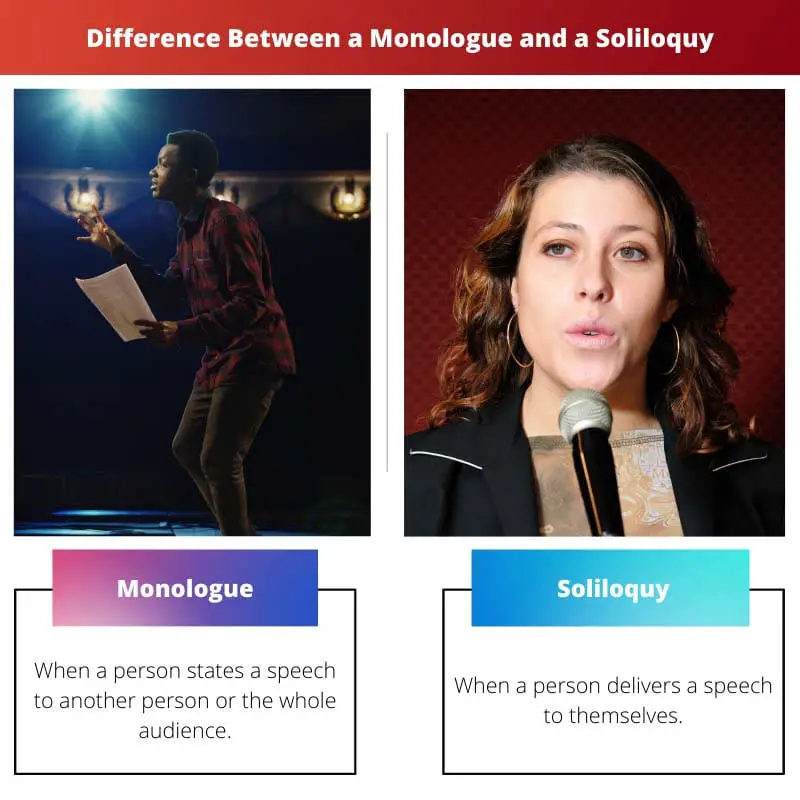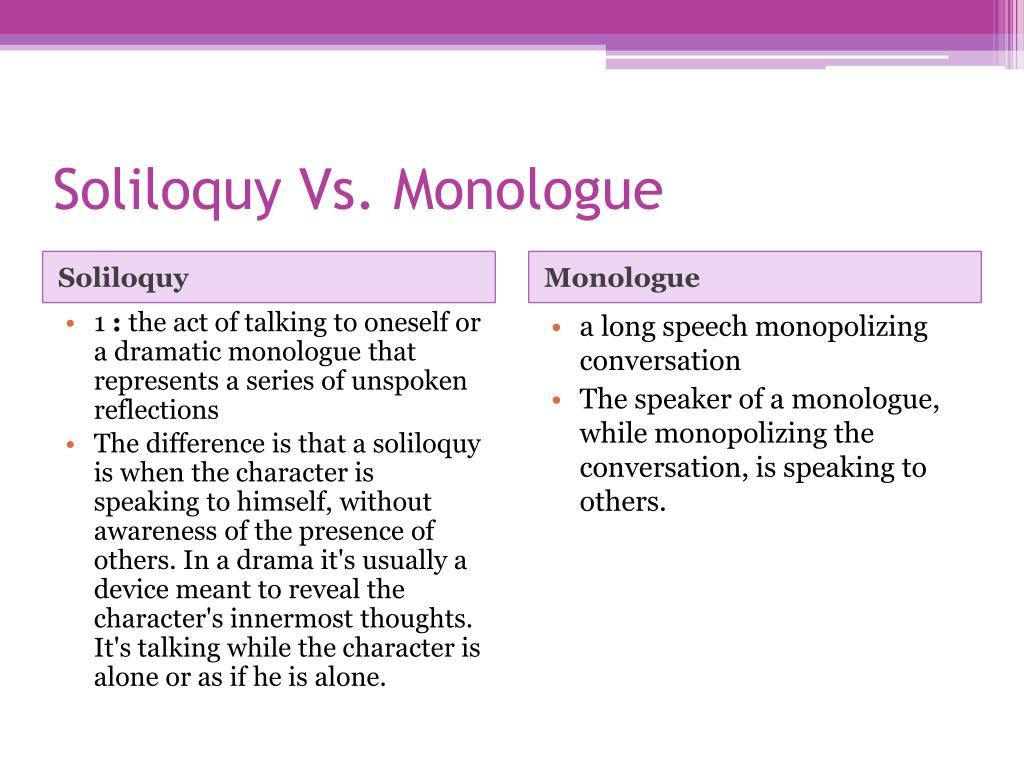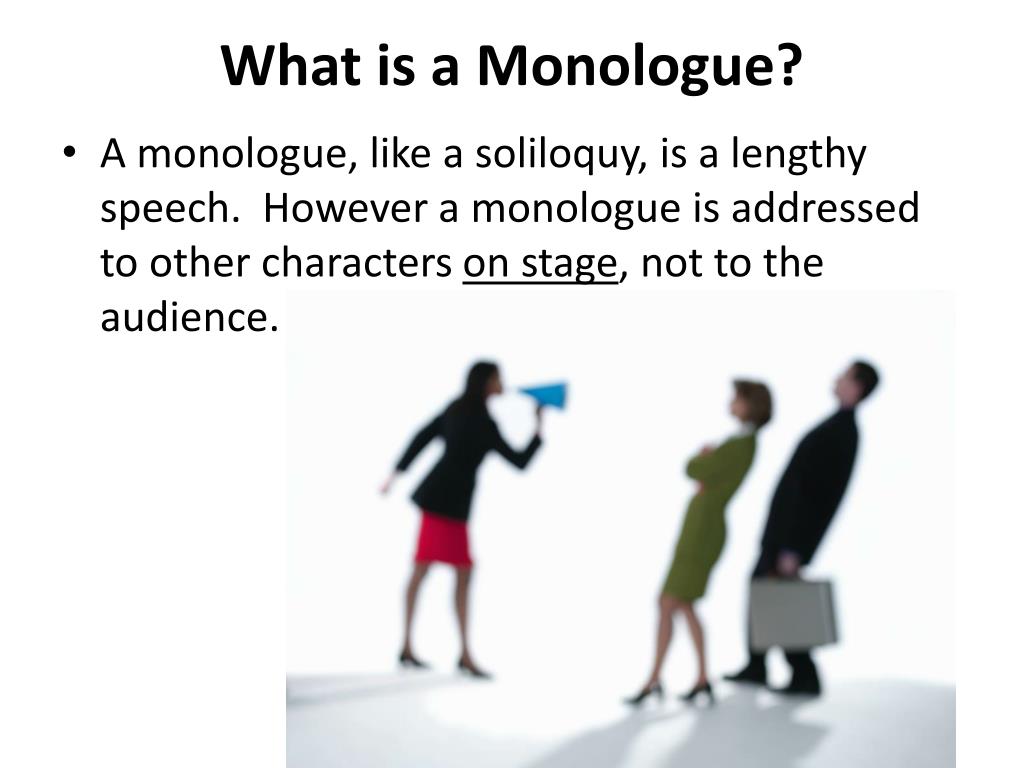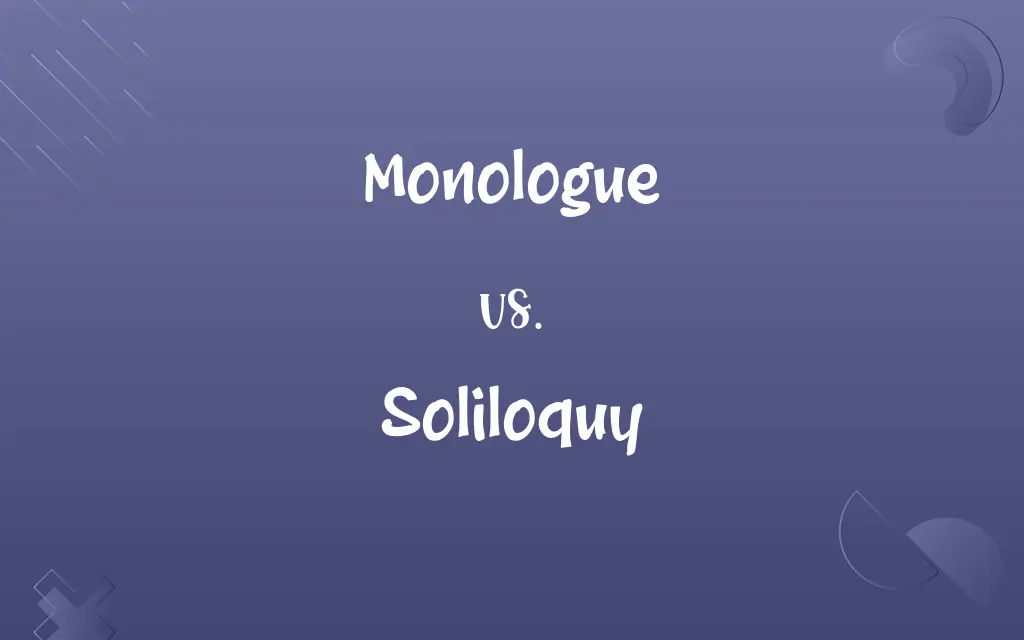Soliloquy Vs Monologue
Soliloquy Vs Monologue - “monologue” and “soliloquy” both refer to a speech held by only one person in front of one or more people, in front of an audience. Learn the difference between soliloquy and monologue, two types of speeches performed by one character in a play. Monologue occurs when a character talks to himself out loud when no other characters are either on stage or within hearing distance. A soliloquy is a speech. Learn the difference between a soliloquy and a monologue, two types of speeches delivered by a single person. A soliloquy is a speech to.
“monologue” and “soliloquy” both refer to a speech held by only one person in front of one or more people, in front of an audience. A soliloquy is a speech. A soliloquy is a speech to. Learn the difference between a soliloquy and a monologue, two types of speeches delivered by a single person. Learn the difference between soliloquy and monologue, two types of speeches performed by one character in a play. Monologue occurs when a character talks to himself out loud when no other characters are either on stage or within hearing distance.
Learn the difference between a soliloquy and a monologue, two types of speeches delivered by a single person. “monologue” and “soliloquy” both refer to a speech held by only one person in front of one or more people, in front of an audience. A soliloquy is a speech. Learn the difference between soliloquy and monologue, two types of speeches performed by one character in a play. Monologue occurs when a character talks to himself out loud when no other characters are either on stage or within hearing distance. A soliloquy is a speech to.
Monologue vs. Soliloquy What's The Difference (With Table)
A soliloquy is a speech. “monologue” and “soliloquy” both refer to a speech held by only one person in front of one or more people, in front of an audience. Monologue occurs when a character talks to himself out loud when no other characters are either on stage or within hearing distance. Learn the difference between soliloquy and monologue, two.
Monologue vs Soliloquy Difference and Comparison
Learn the difference between a soliloquy and a monologue, two types of speeches delivered by a single person. A soliloquy is a speech. A soliloquy is a speech to. “monologue” and “soliloquy” both refer to a speech held by only one person in front of one or more people, in front of an audience. Learn the difference between soliloquy and.
Soliloquy Vs Monologue Dramatic Devices Explained in 14 Minutes
Learn the difference between soliloquy and monologue, two types of speeches performed by one character in a play. Learn the difference between a soliloquy and a monologue, two types of speeches delivered by a single person. A soliloquy is a speech to. “monologue” and “soliloquy” both refer to a speech held by only one person in front of one or.
Difference between Soliloquy and Monologue
A soliloquy is a speech to. “monologue” and “soliloquy” both refer to a speech held by only one person in front of one or more people, in front of an audience. Monologue occurs when a character talks to himself out loud when no other characters are either on stage or within hearing distance. Learn the difference between soliloquy and monologue,.
PPT Soliloquy Vs. Monologue PowerPoint Presentation, free download
“monologue” and “soliloquy” both refer to a speech held by only one person in front of one or more people, in front of an audience. Learn the difference between soliloquy and monologue, two types of speeches performed by one character in a play. A soliloquy is a speech to. Learn the difference between a soliloquy and a monologue, two types.
PPT Monologue, Soliloquy or Aside PowerPoint Presentation, free
Learn the difference between a soliloquy and a monologue, two types of speeches delivered by a single person. “monologue” and “soliloquy” both refer to a speech held by only one person in front of one or more people, in front of an audience. Monologue occurs when a character talks to himself out loud when no other characters are either on.
PPT Soliloquy, Aside, and Monologue PowerPoint Presentation, free
Learn the difference between soliloquy and monologue, two types of speeches performed by one character in a play. A soliloquy is a speech. Learn the difference between a soliloquy and a monologue, two types of speeches delivered by a single person. A soliloquy is a speech to. Monologue occurs when a character talks to himself out loud when no other.
What's the Difference Between a Soliloquy and a Monologue?
Monologue occurs when a character talks to himself out loud when no other characters are either on stage or within hearing distance. A soliloquy is a speech to. Learn the difference between a soliloquy and a monologue, two types of speeches delivered by a single person. A soliloquy is a speech. “monologue” and “soliloquy” both refer to a speech held.
Monologue vs. Soliloquy Know the Difference
Learn the difference between soliloquy and monologue, two types of speeches performed by one character in a play. “monologue” and “soliloquy” both refer to a speech held by only one person in front of one or more people, in front of an audience. A soliloquy is a speech to. Monologue occurs when a character talks to himself out loud when.
PPT Monologue, Soliloquy or Aside PowerPoint Presentation, free
A soliloquy is a speech. “monologue” and “soliloquy” both refer to a speech held by only one person in front of one or more people, in front of an audience. Monologue occurs when a character talks to himself out loud when no other characters are either on stage or within hearing distance. Learn the difference between soliloquy and monologue, two.
“Monologue” And “Soliloquy” Both Refer To A Speech Held By Only One Person In Front Of One Or More People, In Front Of An Audience.
Learn the difference between soliloquy and monologue, two types of speeches performed by one character in a play. Learn the difference between a soliloquy and a monologue, two types of speeches delivered by a single person. A soliloquy is a speech to. Monologue occurs when a character talks to himself out loud when no other characters are either on stage or within hearing distance.









